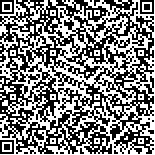| 引用本文: | 许德刚,邢学文,李煜婷,王晨,唐丹,叶汇燕. 基于无人机高光谱遥感技术的河流溢油监测[J]. 石油与天然气化工, 2019, 48(6): 93-97, 104. |
| |
|
| |
|
|
| 本文已被:浏览 1910次 下载 1484次 |

码上扫一扫! |
|
|
| 基于无人机高光谱遥感技术的河流溢油监测 |
|
许德刚1,2,邢学文3,李煜婷1,2,王晨1,2,唐丹1,2,叶汇燕4
|
|
1.中国石油集团安全环保技术研究院有限公司 ;2.石油石化污染物控制与处理国家重点实验室;3.中国石油勘探开发研究院 ;4.中国石油西南油气田公司天然气研究院
|
|
| 摘要: |
| 无人机遥感装备小、机动性高、环境适应性强,是目前灾害应急监测的首选。为明确无人机高光谱遥感在河流溢油应急监测中的应用前景,以六旋翼无人机为平台,高光谱成像仪(400~1000 nm)为探测仪器,新疆原油为溢油油品,内径45 cm的泳圈为围油栏,开展基于无人机平台的高光谱遥感河流溢油检测实验。模拟的油膜厚度范围为6.29~125.82 μm,获取了30组不同油膜厚度的Headwall高光谱数据和一景溢油河道高光谱数据。通过分析油膜厚度与反射率光谱谱段的相关性,确定984 nm为油膜厚度的最佳光谱响应谱段,建立了基于984 nm谱段反射率的水面油膜厚度估算模型,验证数据的预测油量与实际油量对比,显示最大相对误差为7.8%,验证了无人机搭载高光谱传感器开展河流溢油检测的可行性。对于实验后期形成的河道甚薄油膜(1 μm左右),超过模型测定下限,参考波恩协议,估算了油膜厚度,计算了溢油量,发现实际用油量位于预测油量区间,认为河道溢油甚薄油膜区域的油量可以借鉴波恩协议来估算。 |
| 关键词: 无人机 高光谱 河流溢油 油膜厚度 |
| DOI:10.3969/j.issn.1007-3426.2019.06.019 |
| 分类号: |
| 基金项目:中国石油天然气集团有限公司科技项目“原油罐区检测及安全防护技术研究与应用”(2016D-4604) |
|
| Monitoring of river oil spill using UAV hyperspectral remote sensing |
|
Xu Degang1,2, Xing Xuewen3, Li Yuting1,2, Wang Chen1,2, Tang Dan1,2, Ye Huiyan4
|
|
1. CNPC Research Institute of Safety and Environment Technology, Beijing, China;2. State Key Laboratory of Petroleum Pollution Control, Beijing, China;3. PetroChina Research Institute of Petroleum Exploration and Development, Beijing, China;4. Research Institute of Natural Gas Technology, Chengdu, Sichuan, China
|
| Abstract: |
| Unmanned aerial vehicle(UAV)remote sensing equipment is the first choice for disaster emergency monitoring because of its small, highly mobile and environmentally adaptable characteristics. In order to clarify the application prospects of UAV hyperspectral remote sensing in river oil spill emergency monitoring, six-rotor UAV, headwall imaging spectrometer (400-1000 nm) and Xinjiang crude oil were used as platform, detection instrument, and oil spill products respectively, and swimming ring with inner diameter of 45 cm was used as fence. A hyperspectral remote sensing experiment based on UAV for detecting oil spill information in rivers was carried out. The simulated oil film thickness ranged from 6.29 μm to 125.82 μm, obtaining headwall hyperspectral data of 30 groups of oil film with different thickness and a scene of oil spill channel hyperspectral data. By analyzing the correlation between oil film thickness and headwall reflectance spectral band, 984 nm was determined as the optimum spectral response band of oil film thickness. A model for estimating oil film thickness on water surface based on 984 nm spectral reflectance was established to verify the maximum relative error between predicted oil volume and actual oil volume, which was 7.8%. It was considered that it was feasible to detect oil spill in rivers by using hyperspectral sensors on UAV. For the very thin oil film formed in the later stage of the experiment(about 1 μm), which exceeded the lower limit of model detection, the oil film thickness was estimated by referring to Bonn agreement, and the oil spill was calculated. It was found that the actual oil used was in the predicted oil volume range, meaning it was feasible to estimate the oil spill in the very thin oil film area of the river by using Bonn agreement. |
| Key words: unmanned aerial vehicle(UAV) hyperspectral data river oil spill thickness of oil film |
|
|
|
|